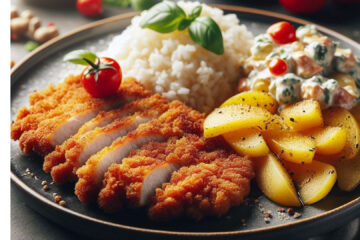The Art of Cooking with Spices: How to Enhance Flavors and Create Unique Dishes
Cooking is more than just following a recipe; it’s an art form that involves creativity, intuition, and, most importantly, a deep understanding of ingredients. Among the most powerful tools in a cook’s arsenal are spices. These tiny treasures have the ability to transform a dish from bland to extraordinary, making every meal an adventure for the palate. Let’s explore how you can harness the power of spices to elevate your cooking and create truly memorable dishes.
Understanding the Basics of Spices
Spices are derived from various parts of plants, including seeds, berries, bark, roots, and flowers. Each spice has its unique flavor profile, ranging from sweet and floral to smoky and spicy. Understanding these profiles is crucial for creating balanced and harmonious dishes.
Building a Spice Cabinet
A well-stocked spice cabinet is the foundation of flavorful cooking. Here are some essential spices to have on hand:
- Cumin: Earthy and warm, cumin adds depth to dishes, especially in Indian and Middle Eastern cuisines.
- Coriander: With its mild, citrusy flavor, coriander complements a wide range of dishes.
- Paprika: Available in sweet, smoked, and hot varieties, paprika adds color and a hint of smokiness.
- Turmeric: Known for its vibrant color and earthy taste, turmeric is a staple in many curries and rice dishes.
- Cinnamon: Sweet and warm, cinnamon works well in both savory and sweet dishes.
- Black Pepper: A universal spice that adds heat and enhances other flavors.
Techniques for Using Spices
- Toasting Spices: Lightly toasting spices before using them can enhance their flavor. Heat them in a dry skillet over medium heat until they become fragrant. Be careful not to burn them!
- Grinding Fresh Spices: Whole spices retain their flavor longer than ground ones. Invest in a spice grinder to grind spices as needed for maximum freshness and potency.
- Layering Spices: Add spices at different stages of cooking to build depth. For example, adding spices early in the cooking process allows them to infuse into the dish, while adding them towards the end can preserve their vibrant flavors.
- Creating Spice Blends: Blend spices to create your own unique mixtures. For instance, mix cumin, coriander, and paprika for a versatile all-purpose seasoning, or combine cinnamon, nutmeg, and cloves for a warm, sweet blend.
Exploring Spice Pairings
Experimenting with spice pairings can lead to exciting new flavor profiles. Here are a few ideas:
- Cinnamon and Chili: A pinch of cinnamon can add warmth and complexity to chili dishes.
- Turmeric and Black Pepper: Black pepper enhances the absorption of turmeric’s beneficial compounds, making this combination perfect for curries.
- Cumin and Coriander: This classic pairing is excellent in Mexican and Indian recipes, adding both earthiness and brightness.
Tips for Success
- Start Small: When trying a new spice or blend, start with a small amount. You can always add more, but it’s difficult to fix a dish that’s over-seasoned.
- Keep Spices Fresh: Store spices in airtight containers in a cool, dark place. Whole spices last longer than ground ones, so buy whole spices when possible and grind them as needed.
- Taste as You Go: Always taste your dish as you cook to ensure the flavors are balanced and adjust the seasoning as necessary.
Conclusion
Spices are more than just a way to season your food—they are a gateway to exploring new flavors and creating distinctive dishes. By understanding the basics of spices, experimenting with different combinations, and mastering techniques like toasting and grinding, you can take your cooking to new heights. So, go ahead and let your culinary creativity flourish with the wonderful world of spices. Happy cooking!




